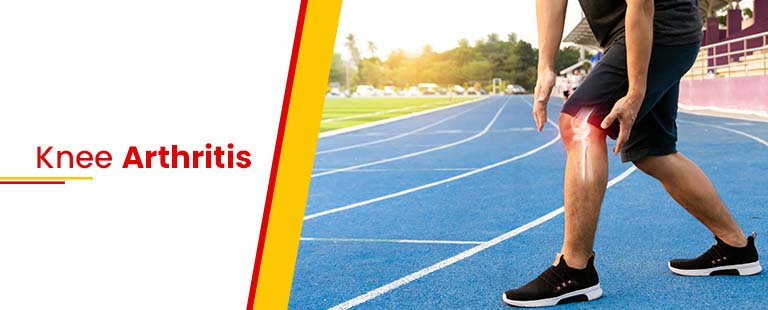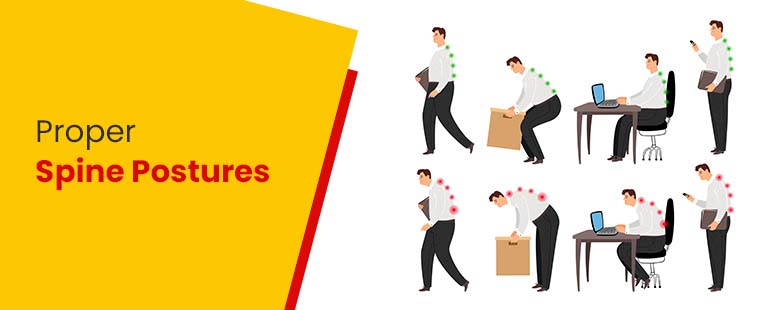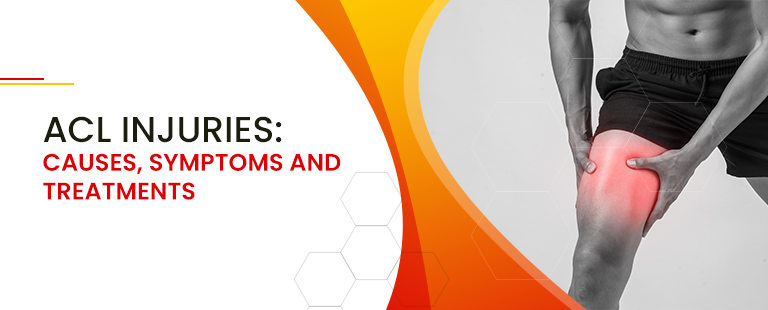Spine Care: Proper Spine Postures For A Healthy Body
Inflammation of the knee joint is known as knee arthritis. The knee is the joint that gets most commonly affected by arthritis. This condition makes daily activities such as running, climbing stairs and walking very difficult. Although there are more than 100 types of arthritis, the most common forms of arthritis that affect the knee are osteoarthritis, posttraumatic arthritis and rheumatoid arthritis.The knee joint is composed of three components – thighbone, shinbone and the kneecap. The slippery, smooth substance that covers the ends of the bones forming the knee joint is called articular cartilage. It cushions and protects the bones when the knee is bent and straightened. When the cartilage wears away, bones start rubbing with each other leading to arthritis of the knee.
Symptoms
Inflammation and pain in the knee is the biggest symptom of arthritis. Apart from that,there are other symptoms as well, such as:
● Swollen and stiff knee joint
● Difficulty bending and straightening the knee
● Feeling like the knee is locking or sticking
● Grinding, clicking, snapping or creaking sound while movement
● Increase in pain with the weather change
Types of knee arthritis
● Osteoarthritis – The most common type of knee arthritis, osteoarthritis occurs when the cartilage wears away. This causes the bones to rub together, leading to painful bone spurs.
● Rheumatoid arthritis – This type of arthritis is an autoimmune disorder,wherein the body’s immune system starts attacking healthy cells. The body starts thinking that healthy tissues are harmful which causes the immune system to destroy these tissues, ultimately destroying the joint.
● Post-traumatic arthritis – This type of arthritis develops after an injury. Old injuries put extra stress on the knee joint, leading to arthritis.
● Gouty arthritis – When crystals of uric acid start depositing in the knee joint,it is known as gouty arthritis. It can cause a lot of pain, inflammation and swelling.
Causes of knee arthritis
● Osteoarthritis – This type of arthritis is caused by the daily wear and tear of the knee joint.
● Rheumatoid arthritis – It is not known what causes this type of arthritis,however, genetic factors might be at play.
● Post-traumatic arthritis – As mentioned above, this type of arthritis is caused by previous injuries such as a cartilage tear or sprains.
● Gouty arthritis – This type of arthritis can be caused by various factors such as obesity, old age, family history of gouty arthritis or using certain medications.
Diagnosis
Germanten Hospital is the number one centre for orthopaedics in Hyderabad. The team of doctors at Germanten Hospital is led by Dr.Mir Jawad Zar Khan, a veteran of 20 years in the field of orthopaedics. A gold medalist of Osmania University, he has received advanced training in this field from Germany and the USA.To celebrate his achievements and effort, he was awarded the title of Best Doctor by
the ex-CM of Joint Andhra Pradesh & Former Governor Tamilnadu, Shri Roshaiah Garu in 2018. In 2019, he was honoured with the Vaida Ratna Award by the Honourable Health Minister of Telangana, Shree Etala Rajendra.At Germanten Hospital, a team of the best doctors will first perform a physical exam of the knee area. After that, imaging tests such as a CT scan, an MRI or an X-ray also might be performed, for better identification of damage to the tissues. Lab tests and uric acid tests are also performed to diagnose rheumatoid arthritis as well as gouty arthritis.
Treatment
There are various methods to lessen the pain caused by knee arthritis. These include:
● At-home treatment methods – A few things that can be followed to reduce the pain, at home are:
● Losing extra weight
● Engaging in low-impact exercises instead of high-impact ones
● Physical therapy
● Wearing a knee bandage or brace
● Applying ice or heat
● Over-the-counter pain relief medication
● Non-surgical options – There are a wide variety of non-surgical options for knee arthritis. Some of these approaches include:
● Viscosupplementation- This procedure works by injecting hyaluronic acid into the joint. The thick fluid helps reduce swelling and pain in your arthritic joint.
● Radiofrequency (RF) ablation- It is a minimally invasive and non-surgical procedure and works by destroying the nerve fibers that carry the pain signals to the brain.
● Stem cells therapy- In this procedure, stem cells are used to reduce pain. It is a natural form of treatment wherein no anesthesia is required.
● Surgery – If at-home remedies and non-surgical options don’t work, the last option to consider is knee surgery. Various procedures can be performed, such as:
● Cartilage transplant – In this procedure, the damaged knee cartilage is replaced with tissue grafts that would help regain the normal function of the knee. This procedure might also eliminate the need for knee replacement surgery.
● Partial knee replacement – In this procedure, only the damaged cartilage is removed and the ligaments are kept intact. This technique
helps patients gain a better range of motion and also recover faster.There is minimal loss of blood in this procedure.
● Total knee replacement – In this procedure, the knee joint is completely replaced with a prosthesis or an implant.
At Germanten Hospital, knee replacement surgery is performed using a robotic arm.This technology is precise to the nearest half millimetre and makes the surgery much safer and advanced. Our hospital is the first one in India to have acquired robotic arm
technology for minimally invasive knee replacement surgeries.Germanten Hospital is NABH-accredited, has over 200+ beds and each operation theatre has a laminar airflow for total infection control. In 2019, Times of India graded it as the Best Emerging Orthopedic Hospital. It was also named the Best Orthopedic Hospital in South India by Economic Times 2021.










